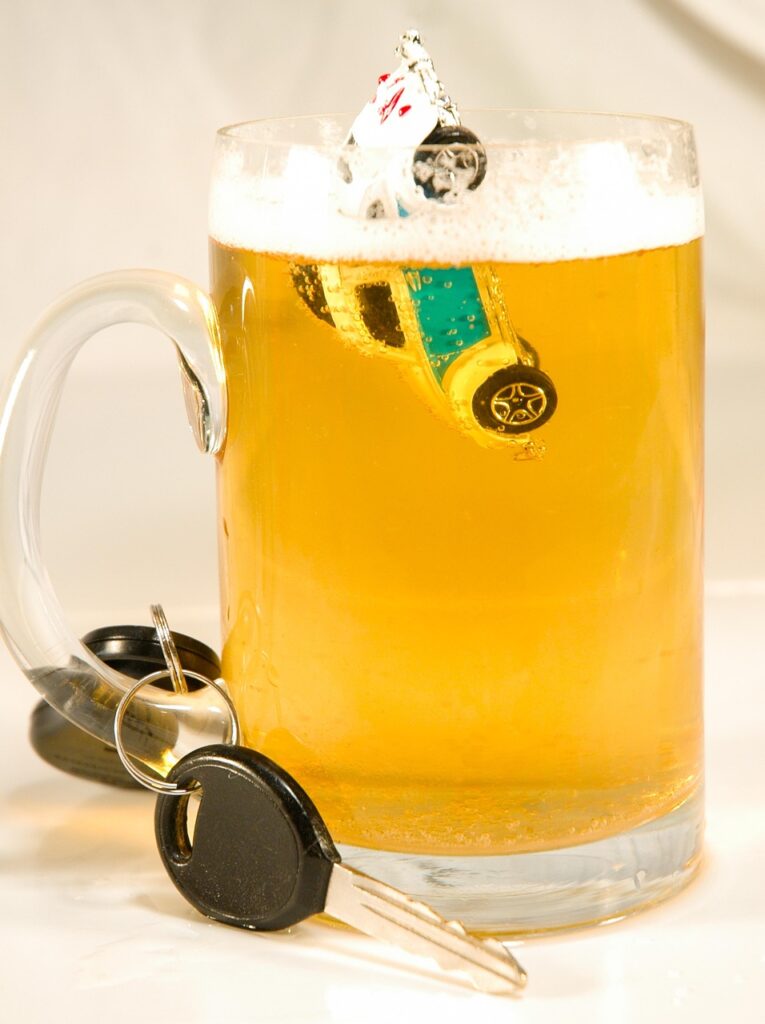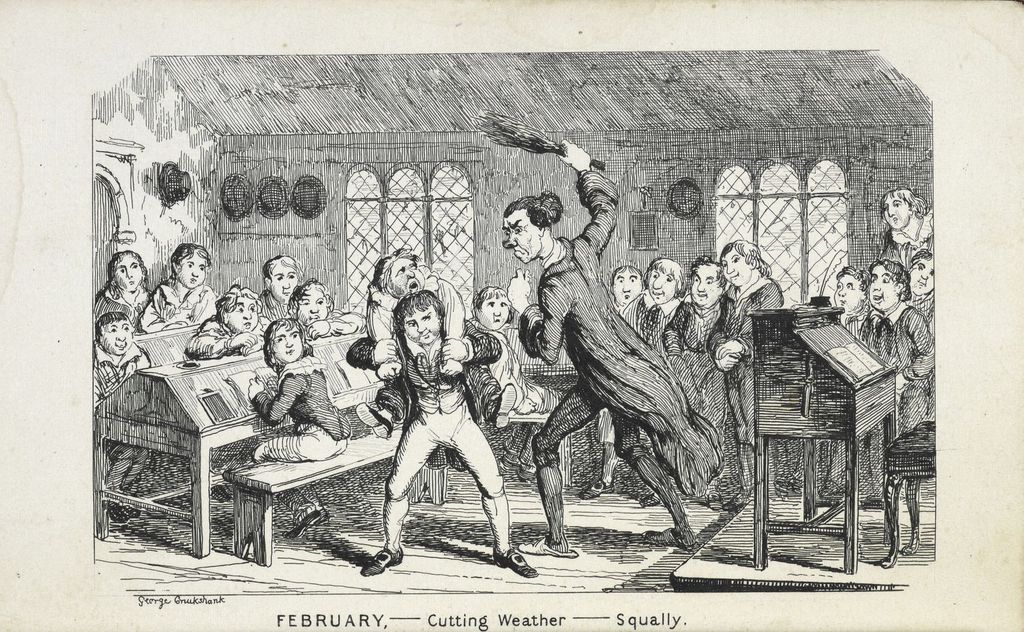
Hey there, friend! I hope you’re ready to take a totally tubular trip down memory lane, because we’re about to dive headfirst into the glorious, neon-drenched, and often downright bizarre world of the 1980s. Ah, the good old days, right? It was a decade of big hair, bigger shoulder pads, and a whole lot of everyday behaviors that felt completely normal back then—but would probably get you side-eyed, fined, or flat-out canceled today. We’re talking about a time when societal rules were, let’s just say, a little more… flexible.
Picture this: you’re cruising around town, kids piled into the back of your station wagon, or even hanging out in the bed of a pickup truck, wind whipping through your carefully sculpted mullet. No car seats in sight, and seat belts? Who needs ‘em! We survived, didn’t we? From health and safety to what was considered “entertainment,” the gap between then and now is staggering. The cultural and societal shifts over the decades are nothing short of dramatic, and trust us, some of these throwbacks are going to make your jaw drop.
So, buckle up (metaphorically, of course, because nobody did that back then!) and get ready to relive some of these incredible, sometimes cringeworthy, and always fascinating ’80s habits. It’s easy to laugh now, but these throwback habits remind us just how far we’ve come—and how wonderfully different things were. Let’s dig in and see just how wild things truly were!

1. **Casual Car Safety: From Pickup Beds to Missing Car Seats**Believe it or not, for most of the 1980s, the sight of kids literally bouncing around in the back of a car, completely unrestrained, was not only common but also totally normal. Kids piled into the back of pickup trucks or station wagons like it was no big deal, feeling the thrill of the wind in their hair. It was a core memory for many ’80s kids, a symbol of freedom and adventure.
Early “child seats” were, quite frankly, more about parental convenience than any real safety. They were essentially just booster chairs, designed mostly to keep a child from crawling around and to give them a better view out the window. One 1970s ad even proudly boasted that its padding would absorb “bumps.” Yikes is right; it’s almost laughable how little thought was given to actual crash protection.
Today, that kind of behavior would immediately trigger a Child Protective Services (CPS) call, and for good reason! The movement for actual safety standards for car seats only began in the late ’70s, and it took until 1985 for every state to finally pass laws requiring their use. Even then, the change didn’t happen overnight, with a 1984 National Highway Traffic Safety Administration (NHTSA) report showing a dismal 46% usage rate for kids under four. What’s more shocking? A jaw-dropping 61% of those using a car seat were doing so incorrectly.
We now know, without a shadow of a doubt, that a correctly used car seat reduces the risk of fatal injury by 71% for infants. The shift from that 46% usage rate in 1984 to today’s approximately 88.2% for children under 13 is nothing short of a public health triumph. This dramatic improvement has saved an estimated 11,606 young lives since 1975, proving that sometimes, the “fun” of the past was simply too dangerous for the present.

2. **Ubiquitous Smoking: Lighting Up Anywhere and Everywhere**Okay, let’s start with one of the most glaring differences: smoking. People lit up absolutely everywhere in the 1980s. We’re talking airplanes, offices, restaurants, and even hospitals! Non-smoking sections were, to put it mildly, a total joke, often separated by a single table and a lot of wishful thinking, doing little to protect anyone from the plumes of smoke.
Yes, people really did this—with kids in the car and sometimes even with the A/C on. These days, it’s not only banned in several states but universally seen as child endangerment. The culture of smoking was so pervasive because, well, almost everyone smoked; the National Institutes of Health found that the average adult smoking rate in the 1980s was a staggering 32%, nearly three times what it is today.
This widespread acceptance was no accident, by the way. The powerful tobacco industry fought regulations tooth and nail, spending a fortune on product placement in movies and television to make smoking look glamorous and cool. It was a well-orchestrated campaign that ingrained smoking deeply into the fabric of daily life, making it seem utterly normal and sophisticated.
Thankfully, the change, though painfully slow, did come. The first major step was a 1988 ban on smoking during domestic flights of two hours or less, later extended in 1990, and finally, in 2000, all flights to and from the U.S. became permanently smoke-free. The real turning point was the growing public awareness of secondhand smoke, with a 1986 Surgeon General’s report highlighting its dangers. We now know that secondhand smoke is responsible for over 7,300 lung cancer deaths annually among non-smokers, making the ’80s smoking culture a truly shocking relic of the past.
3. **Unsupervised Childhood: The Reign of Latchkey Kids and Backyard Warriors**If you grew up in the 1980s, you probably remember the ultimate rule of childhood: “Come home when the streetlights come on.” This wasn’t just a saying; it was a whole parenting philosophy, allowing kids a level of freedom that seems almost mythical now. You’d leave the house after breakfast, disappear for hours, and your parents might have a vague idea of where you were, but they certainly weren’t tracking you on an app.
This “laissez-faire” style gave rise to the iconic “latchkey kid.” In 1982, an estimated 3 million children between 6 and 13 came home from school to an empty house, their house key often worn on a string around their neck. This wasn’t just a quirky cultural trend; it was a direct result of massive societal shifts, including soaring divorce rates and the number of working mothers doubling, leaving many families with no one home after school.
Forget bottled water or filtered taps; you just bent over and drank from the hose like a little backyard warrior. Riding bikes without helmets? Totally normal. Helmets were for professional cyclists or your “weird cousin.” You wiped out, scraped a knee, and got back on with gravel still stuck to your skin, because minor injuries were just part of growing up and learning resilience.
While many look back on that independence with genuine nostalgia, the reality was often more complicated. In 1982, education researchers described the phenomenon as a “national disgrace,” highlighting the profound loneliness and fear many children experienced, particularly those from poorer households. The contrast with today’s highly structured and supervised childhoods couldn’t be starker, where such freedom would send modern parents into a full-blown panic.

4. **Dangerous Tanning Practices: Baking in the Sun with Baby Oil and Reflectors**In the 1980s, the ultimate summer goal was undeniably a deep, dark, sun-kissed tan. It was absolutely seen as a sign of health, vitality, and undeniable glamour. Commercials for Coppertone sunscreen, which you probably barely used, urged people to “flash them your Coppertone tan,” reinforcing this dangerous beauty ideal. It wasn’t uncommon for people to slather themselves in baby oil, or even iodine, to accelerate the tanning process, literally baking themselves under the midday sun like cookies.
This obsession wasn’t just limited to the beach or the backyard, either. The indoor tanning industry experienced an explosive boom. The very first tanning salon in the U.S. opened its doors in 1978, and by 1988, there were over 18,000 of them dotted across the country. The use of tanning beds among people under 25 actually tripled between 1986 and 1996, highlighting just how widespread and accepted this dangerous practice had become.
Unfortunately, the marketing behind this pervasive trend was built on a deeply dangerous lie. As dermatologist Dr. Erika Summers so clearly explains, many tanning products would deceptively claim to let in the “good” tanning rays while supposedly blocking the “bad” burning rays. This entire concept, she bluntly states, is completely “inaccurate.” There was a fundamental misunderstanding, or perhaps a deliberate misrepresentation, of how skin reacts to sun exposure.
Today, we know the terrifying truth, and it’s a stark contrast to the casual attitude of the ’80s. The International Agency for Research on Cancer now unequivocally classifies indoor tanning devices as carcinogenic to humans. Dr. Summers puts it in no uncertain terms: “All freckling and tanned skin is damaged skin.” The “healthy glow” that everyone coveted in the 1980s was, in reality, a visible sign of widespread cellular damage, and a habit that would rightfully alarm us today.

5. **Casual Drinking and Driving: The “A Few for the Road” Mentality**It’s almost impossible to imagine today, but in the early 1980s, drunk driving was often treated with a casual shrug, sometimes even as a twisted badge of honor. People would openly boast about their ability to drive “under the influence,” a shocking testament to the cultural norms of the time. The legal penalties for drunk driving were often little more than a slap on the wrist, perhaps a small fine, which did little to deter repeat offenders.
This alarmingly casual attitude had devastating, heartbreaking consequences across the nation. In 1987 alone, an estimated 23,630 Americans were tragically killed in alcohol-related car crashes. It was a full-blown public health crisis, massive in scale, yet it had been hiding in plain sight, largely unaddressed and normalized within society. The sheer number of lives lost is a grim reminder of how deeply ingrained this behavior was.
However, a powerful catalyst for change emerged from an unimaginable tragedy. On May 3, 1980, a 13-year-old girl named Cari Lightner was killed by a drunk driver who, outrageously, had multiple prior offenses. Her grieving mother, Candace Lightner, channeled her immense anger and sorrow into action, founding Mothers Against Drunk Driving (MADD) – a name that would become synonymous with a profound cultural shift.
MADD’s approach was nothing short of revolutionary. Instead of relying solely on cold, impersonal statistics, they strategically “put a face to the victims,” sharing heartbreaking personal stories that transformed the public perception of drunk driving. It shifted from being a mere personal failing to being recognized as a violent, utterly unacceptable crime. This powerful grassroots movement successfully pressured politicians across the country to pass much tougher laws, including the landmark 1984 National Minimum Drinking Age Act, which tied highway funding to raising the drinking age to 21. The results have been nothing short of miraculous, with drunk driving fatalities in the U.S. plummeting by 41% since 1982, and MADD estimating its efforts have saved nearly 475,000 lives. They didn’t just change the laws; they fundamentally changed our culture, turning a deadly norm into a social taboo.

6. **Problematic Workplace Culture: Hierarchies and Harassment**The 1980s office was a truly distinct world, defined by rigid hierarchies, the ubiquitous power suit, and a fierce “work hard, climb the ladder” mentality. Loyalty to the company was not just encouraged, it was absolutely expected, often over and above personal life. Face time at the office was practically mandatory, regardless of productivity, and the very phrase “work-life balance” hadn’t even been invented yet, let alone become a concept for discussion.
Beneath this buttoned-up, seemingly professional surface, however, a deeply toxic culture often thrived, lingering uncomfortably in the background. A landmark 1987 survey of the federal workforce revealed a truly shocking statistic: a staggering 42% of women and 14% of men had experienced unwanted sexual attention on the job. Incredibly, these numbers were almost identical to those from a 1980 survey, indicating that the problematic behavior itself wasn’t actually changing.
But something critically important *was* changing: awareness. Between 1980 and 1987, the percentage of women who defined “pressure for dates” from a supervisor as sexual harassment jumped from 77% to 87%, according to the U.S. Merit Systems Protection Board. Similarly, the number of women who saw “suggestive looks” as harassment rose from 72% to 81%. People were finally starting to develop the vocabulary and the understanding to name and categorize what was happening to them as unacceptable.
Even with this rising awareness, taking action was still remarkably rare. In 1987, only a tiny 5% of victims filed any kind of formal complaint, a testament to the fear of retaliation and the lack of robust support systems. Most simply tried to ignore it and get on with their jobs, enduring uncomfortable situations in silence. This 80s paradox—static, unacceptable behavior but rapidly rising awareness—set the crucial stage for the future, leading to the frustrations that finally boiled over with movements like #MeToo, and the surge in total harassment charges filed with the Equal Employment Opportunity Commission (EEOC) by over 47% in just the last three years.
7. **Environmental Impact of Beauty Trends: Big Hair That Was Literally Bad for the Planet**Nothing screams “1980s” quite like big hair. We’re talking truly gravity-defying, teased, permed, and meticulously sprayed-into-place masterpieces that required dedication and a small fortune in products. And the undeniable magic ingredient holding it all together, ensuring every strand stayed exactly where it was supposed to? Hairspray. Lots and lots of hairspray, often applied in a cloud so dense you could barely see through it.
But this iconic, sky-high look had a hidden, and frankly terrifying, dark side that few knew about at the time. Most of those ubiquitous aerosol cans were powered by chemical propellants called chlorofluorocarbons, or CFCs. These were the unsung heroes of voluminous hair, providing that powerful, long-lasting mist that kept every perm perfectly coiffed.
In 1974, scientists first made a groundbreaking and alarming discovery: CFCs were not just harmlessly dissipating into the atmosphere. They were actually drifting all the way up into the stratosphere, and in a deeply concerning process, depleting the Earth’s vital protective ozone layer. This scientific theory, initially met with skepticism by some, became a chilling reality in 1985, when British scientists confirmed the existence of a massive, undeniably real “ozone hole” right over Antarctica.
The discovery sent shockwaves around the globe, prompting one of the most successful acts of international cooperation in human history. In 1987, world leaders gathered to sign the Montreal Protocol, a landmark environmental treaty that courageously phased out the production of CFCs and other ozone-depleting substances. Experts now hail the Montreal Protocol as “one of the most profound success stories of international climate action” and “one of the most successful multilateral environmental agreements” ever signed. It proved that when faced with a clear and present danger backed by solid science, the world *can* come together to solve a problem—a powerful and optimistic lesson that, in a wonderfully ironic way, started with our collective obsession with big, bold ’80s hair.
Alright, friends, we’re not done with our wild ride through the ’80s just yet! If you thought the first batch of cringe-worthy habits was eye-opening, buckle up, because we’ve got even more totally unbelievable trends and behaviors coming your way. From bewildering media frenzies to problematic entertainment and disciplinary tactics that would spark outrage today, prepare to have your mind blown by how different things once were. Let’s dive into the next seven habits that would absolutely, positively not fly in our current world!
8. **The “Satanic Panic” Media Frenzy**If you thought the ’80s were just about fun and games, allow me to introduce you to the “Satanic Panic.” This wasn’t some quirky fashion trend; it was a bizarre and terrifying period of mass hysteria that swept across America, convincing entire communities that devil-worshipping cults were operating right out of suburban daycare centers, allegedly abusing children in horrific rituals.
It sounds completely insane now, and honestly, it was. This frenzy was ignited by a 1980 book called *Michelle Remembers*, which made its sensational claims based on the now-discredited and truly dangerous practice of “recovered-memory therapy.” These wild accusations were then fanned into a national firestorm by the rise of a new media landscape, with tabloid TV shows and “infotainment” news programs eagerly, and often uncritically, reporting on these alleged conspiracies, presenting fear as fact rather than questioning it.
The most infamous case, the McMartin Preschool trial in California, became a notorious example of this hysteria. This trial dragged on for seven excruciating years and cost millions of dollars, ultimately becoming the longest and most expensive criminal trial in U.S. history. Despite the immense resources poured into it and the widespread public fear, it ended with exactly zero convictions, proving just how baseless the claims truly were.
Sociologists today recognize this as a textbook “moral panic,” a perfect storm of social anxieties about working mothers and changing family structures, fueled by a sensationalist media and junk science. It was nothing short of a modern-day witch hunt where innocent daycare workers became the “folk devils,” and the consequences for those falsely accused were utterly devastating and life-ruining. Thank goodness we’ve learned a thing or two about critical thinking and media literacy since then!
Read more about: The 1980s Satanic Panic: A Deep Dive into How a Decade’s Fear Forged Its Own Monsters

9. **Fighting for Your Right to… Censor Music?**The ’80s might have been the golden age of MTV, with music videos shaping pop culture, but it was also the era of a full-blown culture war over rock and pop music. In 1985, a group of politically connected “Washington Wives,” including the iconic Tipper Gore, formed the Parents Music Resource Center (PMRC) with a mission to fight back against what they dramatically called “p*rn rock.” The movement famously kicked off after Gore bought Prince’s *Purple Rain* for her 11-year-old daughter and was absolutely horrified by the explicit lyrics of the song “Darling Nikki.”
The PMRC didn’t stop there; they soon compiled their infamous “Filthy Fifteen” list of objectionable songs, targeting everyone from Madonna and Cyndi Lauper to heavy metal bands like Judas Priest and W.A.S.P. The conflict came to a dramatic head in a nationally televised Senate hearing in September 1985. The PMRC passionately argued for a ratings system to warn parents about explicit content, convinced it was the only way to protect impressionable young minds.
In response, legendary musicians Frank Zappa, Dee Snider, and John Denver delivered powerful, passionate testimony, fiercely defending artistic freedom and blasting the proposal as nothing less than censorship that directly violated the First Amendment. Zappa’s testimony, in particular, was legendary and went down in history. He famously called the PMRC’s proposal “an ill-conceived piece of nonsense which fails to deliver any real benefits to children” and brilliantly compared it to “treating dandruff by decapitation.”
To avoid the real threat of government regulation, the Recording Industry Association of America (RIAA) “voluntarily” agreed to a compromise. And just like that, on November 1, 1985, the iconic black-and-white “Parental Advisory: Explicit Lyrics” sticker was born! Ironically, this sticker often had the exact opposite of its intended effect. Instead of a warning, it became a badge of honor for teens – a perfect marketing tool for rebellion, proving that attempts to control culture can sometimes backfire in the most spectacular ways.
10. **Watching Movies with Casual Sexual Assault for Laughs**Looking back at some of the most beloved ’80s comedies today is, well, an experience. Many of the decade’s biggest hits are now filled with deeply problematic scenes that portray sexual harassment and even assault as casual, funny, or even romantic plot points. It’s truly jarring to realize how much we’ve progressed in our understanding of consent and appropriate behavior.
The examples are jarring, to say the least. Take *Revenge of the Nerds* (1984), where a main character wears a disguise to trick a woman into having sex with him, and this is shockingly framed as a triumphant victory for the ‘nerd’. Or *Sixteen Candles* (1984), where a group of male characters conspires to let one of them have sex with a girl who is passed out drunk at a party. These moments were played for laughs, a stark contrast to how they would be received today.
These movies didn’t just feature bad behavior; they actively promoted toxic myths about consent that are still being dismantled today. They pushed dangerous ideas that women who say “no” are just playing “hard to get,” and that someone drunk or unconscious is still able to give consent – concepts that are fundamentally flawed and harmful. It’s almost unbelievable that these narratives were once considered mainstream entertainment.
This widespread acceptance was a reflection of a profoundly sexist culture that, thankfully, we are now much more aware of and actively working to dismantle. Today, such plotlines would not only spark immediate outrage but would also likely lead to severe backlash and potentially ruin a film’s reputation, proving how much our collective consciousness around these sensitive topics has evolved for the better.

11. **Playing With Lawn Darts**Ah, lawn darts! These sharp-tipped projectiles were marketed, incredibly, as toys. For many ’80s kids and families, they were just another part of the quintessential backyard fun. Imagine throwing heavy, metal-tipped darts across your lawn, aiming at hoops on the grass, with kids and pets potentially in the flight path. What could possibly go wrong?
The ’80s were definitely a time when safety warnings often felt more like suggestions than strict rules, and lawn darts perfectly embodied this relaxed attitude. Families would gather in backyards for barbecues and celebrations, and these pointed missiles would be casually thrown across the lawn as part of the entertainment. There was a general lack of awareness, or perhaps just a dismissal, of the inherent dangers these ‘toys’ posed.
Unsurprisingly, this casual approach to airborne, pointed objects led to serious injuries, and tragically, even fatalities. The consequences became impossible to ignore, forcing a reevaluation of what was considered acceptable for child’s play. They were eventually banned in 1988 after causing numerous serious injuries.
Today, the idea of kids playing with such dangerous items is almost unimaginable. A quick search for “lawn darts” will usually show you news stories about their ban and the accidents they caused. It’s a truly stark reminder of how our understanding of childhood safety has evolved, transforming what was once ‘backyard fun’ into a relic of a far less safety-conscious era.

12. **Corporal Punishment in Schools**While dusting chalkboard erasers might have been a minor classroom punishment in the ’80s, corporal punishment was a much bigger, more serious deal. Believe it or not, physical discipline, such as paddling or other forms of striking, was still widely used in schools across America. It wasn’t just tolerated; in many places, it was an accepted and even expected method for maintaining order.
In many communities, physical discipline was seen as a legitimate and highly effective way to enforce rules and teach children respect for authority. This practice was often viewed by parents and educators alike as a necessary tool, a way to instil discipline and character. It reinforced a strict hierarchy between educators and students, with little room for questioning the methods used.
Children who misbehaved could face a swift paddling, often administered by a teacher or principal, sometimes even in front of their peers. The emotional sting of this public humiliation, combined with the physical pain, often stuck with students long after the experience itself. It was a harsh reality that shaped the school experience for many.
Thankfully, our understanding of child psychology and effective disciplinary methods has dramatically shifted. Today, corporal punishment in schools is not only illegal in most places but is also widely considered inappropriate, ineffective, and harmful. The idea of a teacher physically disciplining a child would now be met with outrage, legal action, and immediate termination, showcasing a profound evolution in educational and ethical standards.
Read more about: Unbelievable ’70s Norms: 13 Shocking Things That Would Never Fly in Today’s World
13. **Microwaving Anything in a Plastic Container**In the ’80s, the microwave oven was a marvel of modern convenience, and we used it with reckless abandon! Tupperware, margarine tubs, random plastic bowls – you name it, it all went into the microwave without a second thought. There was absolutely no talk of BPA, phthalates, or chemical leaching. The prevailing wisdom was simple: if it didn’t melt, it was perfectly fine for heating your leftovers.
Back then, the science simply wasn’t as advanced, and public awareness about potential health risks associated with plastics was practically non-existent. We trusted that if a container was designed to hold food, it was safe for all uses, including being blasted with microwaves. The convenience factor far outweighed any nascent, unarticulated concerns about what might be seeping into our meals.
This ‘if it doesn’t melt, it’s fine’ mentality was pervasive, leading people to reheat everything from last night’s dinner to instant noodles in whatever plastic container was handy. The idea of carefully checking for a “microwave-safe” label, or worrying about the type of plastic, was still decades away from becoming common practice. It was a wild west of plastic-fueled reheating!
Today, we’re armed with vastly more scientific understanding about plastics, endocrine disruptors like BPA, and the potential for harmful chemical migration into our food, especially when heated. Most people would now shudder at the thought of nuking their lunch in a flimsy plastic butter container, opting instead for glass, ceramic, or explicitly labeled microwave-safe plastics. It’s a testament to how far we’ve come in prioritizing food safety and health.

14. **Hitchhiking**Need a ride? In the ’80s, the answer for many was simple: just stick out your thumb and hope for the best! Hitchhiking was a surprisingly common and often romanticized means of travel, particularly among young people. It was seen as an adventurous, spontaneous, and cheap way to get from one place to another, a symbol of freedom and the open road.
There was a certain, perhaps naive, trust in strangers that feels almost unbelievable today. For many, hitchhiking wasn’t viewed as inherently dangerous; it was a practical solution when you didn’t own a car, couldn’t afford a bus ticket, or simply wanted to embrace the free-spirited vibe of the era. People genuinely believed in the kindness of strangers, often without considering the potential risks involved.
Stories of successful cross-country trips and friendly encounters were more commonly shared than tales of danger. This contributed to a culture where picking up or being picked up by a stranger was a relatively normal, if sometimes slightly risky, part of travel. The societal consciousness around personal safety and stranger danger was simply not as heightened as it is now.
Today, the thought of flagging down a complete stranger for a ride sends shivers down most people’s spines, and for very good reason! Increased awareness of crime, abductions, and the general unpredictability of strangers has turned this once-common practice into a definitive no-go. Even modern rideshare apps, which connect you with vetted drivers, come with multiple layers of caution and safety features, highlighting a dramatic and necessary shift in our collective perception of personal safety.
Read more about: Beyond the Screen: 13 Chilling Horror Films You Won’t Believe Are Rooted in Real-Life Terrors
Whew! What a journey back to the ’80s, right? It’s truly mind-boggling to see how many things we once accepted as totally normal have now become utterly unthinkable. From the casual disregard for safety in cars and playgrounds to the widespread presence of smoking, and from baffling media panics to problematic entertainment, the ’80s truly were a wild, wild time. These throwbacks don’t just give us a good laugh; they offer a fantastic reminder of how much our society has evolved, growing in awareness, safety, and inclusivity. It’s a testament to progress, showing us just how far we’ve come—and how much we’ve learned along the way. Stay tubular, but stay safe, everyone!







